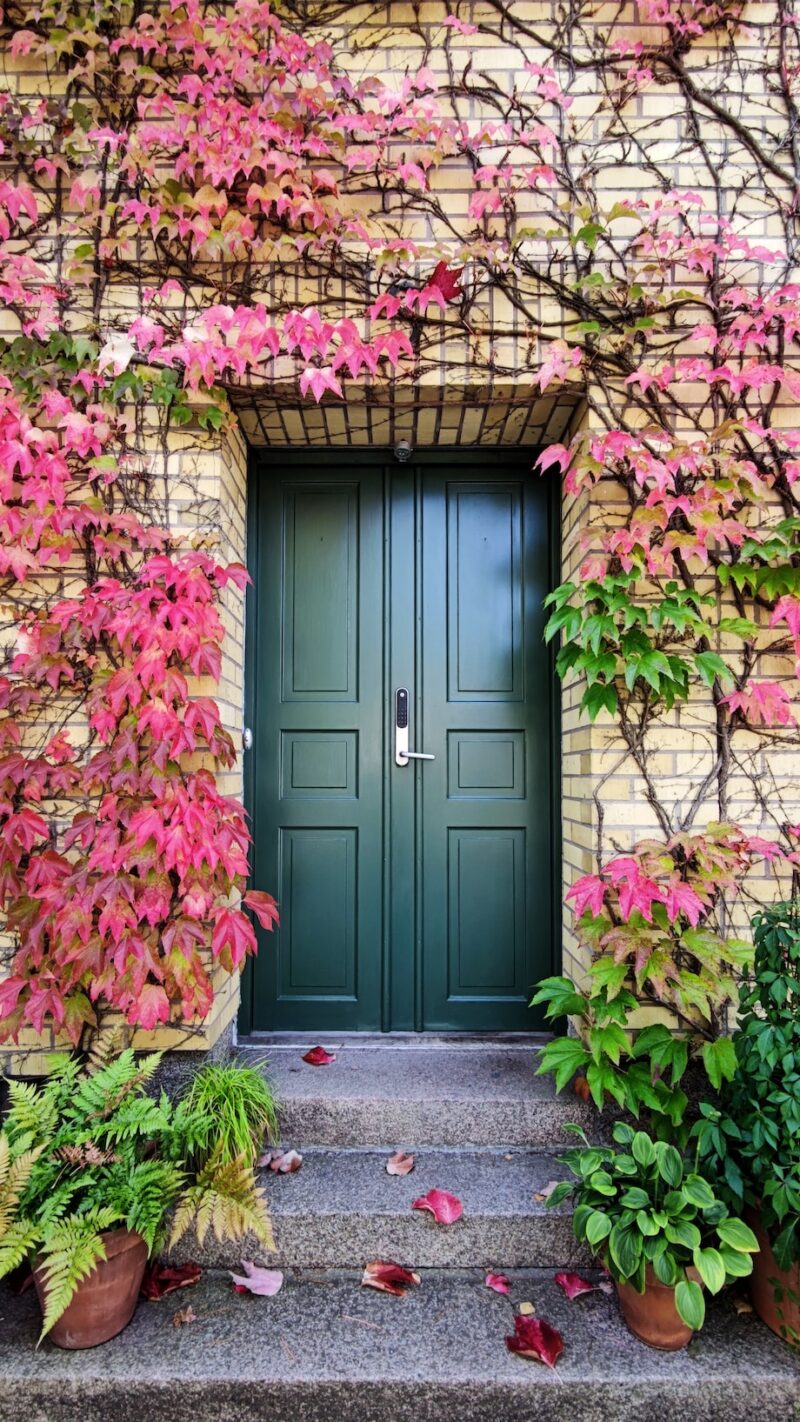What’s the best front door to transform the front of your home?
Want to improve your home’s exterior? One of the best ways to do this is by updating your front door. Not only does the front door serve as the entrance to your home, but it also sets the tone for the rest of the exterior and will provide a great first impression to any visitors.
With so many options available, choosing the best front door for your home can be overwhelming. To help you narrow down your options, here are three of the best front door types.
Composite
Composite front doors are a popular option for homeowners looking for durability, energy efficiency, and aesthetic appeal. Composite doors are made from wood, PVC, and glass-reinforced plastic (GRP).
Pros of composite front doors
Weather resistant
For one, they are extremely durable and resistant to weather, making them ideal for homes in harsh weather conditions.

Energy efficient
Composite doors can help reduce energy bills and make your home comfortable year-round.
Diverse designs
Composite front doors are available in various styles and colours, so you can select a design that matches your home’s décor.
Cons of composite front doors
More expensive
There are some drawbacks to composite front doors, including the expense, as they are pricier than other options. On average, you should expect to pay anywhere from £670 to £2700 for a composite front door. This includes supply and installation.
High maintenance
Composite doors require more maintenance than others, as they can fade or warp over time if not properly cared for.

Non-traditional design
Some homeowners may not like that composite doors are not made entirely of wood, which can detract from the traditional look and feel of a home.
Wooden front doors
Wooden front doors are a classic and timeless option for homeowners who value traditional style and craftsmanship. Wooden front doors are typically made with pine, oak and mahogany.
Pros of wooden front doors
Natural aesthetic
One of the main benefits of wooden doors is their natural beauty, which can add warmth and character to any home.
Durable material
Wood is a strong and durable material that can withstand harsh weather conditions and provide excellent security for your home.

Versatile design
Another advantage of wooden front doors is their versatility. They can be easily customised to match any home’s style, with a wide range of finishes and designs available.
Cons of wooden front doors
Expensive option
Wood doors are more expensive than others, especially if you choose a high-quality hardwood like mahogany or oak. New front door costs start from £270 for a pine door and up to £2000 for an oak design.
Require regular maintenance
Wooden front doors require regular maintenance to keep them looking their best. This can include sanding, staining, and painting to prevent warping or cracking.

Not as energy-efficient
Finally, wooden doors may not be as energy-efficient as some other types of doors, which can lead to higher energy bills. However, proper installation and weatherstripping can minimise heat loss and keep your home comfortable year-round.
uPVC front doors
uPVC front doors are a popular choice for homeowners who value affordability, as installing a uPVC front door costs around £400 to £650.
Energy efficient
uPVC doors are known for being very energy-efficient, which can help to reduce your home’s energy bills and carbon footprint.

Versatile styles
Another advantage of uPVC front doors is their versatility. They are available in a wide range of colours and styles, including options that mimic the look of traditional wooden doors.
Low maintenance
uPVC doors are also easy to clean and require minimal maintenance, making them a convenient choice for busy homeowners.
Cons of uPVC front doors
Not as durable
uPVC doors are less strong and durable than wooden doors, making them more vulnerable to forced entry.
No natural aesthetic
uPVC doors may have different natural beauty and warmth than wooden doors, which can be a downside for homeowners who value traditional style.

Prone to yellowing
Another potential drawback of uPVC doors is that they can yellow or fade over time, especially if exposed to direct sunlight. While this can be prevented with regular cleaning and maintenance, it can be a downside for homeowners who want a long-lasting, low-maintenance door.
When choosing a front door, there are other factors to consider, including the style, colour, and hardware of the door, as well as your personal preferences and the specific needs of your home. Ultimately, the best front door for your home enhances the curb appeal of your home while also providing security and functionality.









